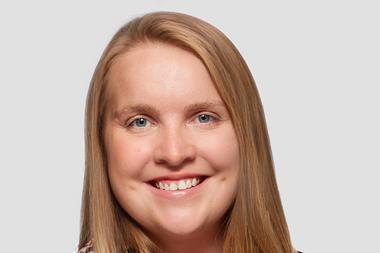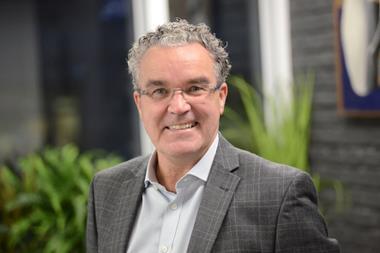’When an issue that has been on the radar for so long is still so present, businesses need to be willing to get uncomfortable,’ says industry expert
Co-founder of The Huffington Post Arianna Huffington once said: “Gender equality is not a female issue or a male issue, it’s a business issue.”

However, it seems the UK insurance sector’s drive for diversity and inclusion (D&I) is “falling short” when it comes to this specific business issue.
Florence Dennis, lead client advisor at broker Partners& and chairwoman of the East Midlands Biba committee, told Insurance Times: “There are many challenges in our profession at the moment and it sometimes feels like this is an area which is always on the agenda.
“But when it comes to investing in the issue and following through, we are falling short.”
This comment followed figures from the PricewaterhouseCooper’s (PwC) Women in Work Index 2023 report, which identified a significant widening of the UK’s gender pay gap in 2021.
PwC defines the gender pay gap as ”a measure of the percentage difference in the average hourly pay of men and women”.
Its most recent index report, published on 7 March 2023, revealed that the UK’s gender pay gap across all sectors widened by 2.4 percentage points to 14.44% in 2021 – four times the average increase recorded across the surveyed countries.
The findings were based on a survey of 22,000 women across 33 countries involved in the intergovernmental Organisation for Economic Co-operation and Development (OECD).
Unequal pay
According to data published by Statista, the mean gender pay gap for full time employees working in the insurance, reinsurance and pension funding industries in the UK during 2022 sat at 12.2%.
Read: ‘Words speaking louder than actions in D&I’
Read: Briefing: Can insurance step up and lead the charge to address gender pay gap failings?
Explore more diversity and inclusion-related content here or discover more news stories here
Published on 2 February 2023, Statista’s data alo highlighted that the pay gap was 24.9% for full time employees working in services auxilliary to insurance and financial services.
The government has mandated, via regulation introduced in 2017, that companies with 250 employees or more disclose data on their gender pay gap.
In a 2021 Gender Pay Gap report report published by the House of Commons that utilised this reporting data, the government found that 78% of median hourly pay was higher for men.
Greater representation
Ruth Bader Ginsburg, former associate justice of the US supreme court, was known for saying “women belong in all places where decisions are being made – it shouldn’t be that women are the exception”.
Her point emphasised the need for women to be just as involved in decision making as men, but the insurance industry is currently failing to include women’s perspective at its highest levels.
This contributes to the pay gap – if women are not in highly paid senior positions at the same rate as men then their earnings as a group will be lower.
According to data collected by the Women in Insurance Initiative, as of 2021, women occupy only 29% of senior executive roles in the industry.
Female representation is senior broker roles is even lower, with just 15.7% of senior broker roles held by women.
Commenting on these data, Dennis told Insurance Times that it can be “frustrating to know change is needed,” especially when this change was “taking place slowly.”
She added: “Every business talks about [the lack of women in senior positions] – but it is still such a big issue for so many firms, which just do not seem to be doing much very quickly.”
Being uncomfortable
Despite positive rhetoric from much of the insurance industry on the issue of the gender pay gap and female representation at the highest levels, without concrete steps being taken progress towards gender pay parity and increased female participation in the workforce will continue to be hindered, causing setbacks in the journey towards equality.
The Covid-19 pandemic has only intensified these challenges, making it crucial for the industry to take swift and meaningful action to promote diversity and inclusion.
PwC found that the UK female labour force participation rate fell 0.4 percentage points between 2020 and 2021, despite labour market recovery across most of the OECD.
Steven Wallace, managing director for Europe, the Middle East and Africa at McLarens, acknowledged that “businesses need to have a clear strategy” in place for addressing this issue.
So, what can be done?
Dennis stressed that firms in the insurance sector “need to be able to have an open and honest review of salary and progression structures and then take the time to put an action plan together on how they will reach a place of equality, with strict timelines for action and review, measuring themselves regularly against what they wish to achieve – like you would any other business objective”.
She continued: “When an issue that has been on the radar for so long is still so present, businesses need to be willing to get uncomfortable, hold their hands up and say ‘we can do better’ – and then actually do better.”
“Whilst many businesses are talking about the issue, meaningful action is not being taken.”
’Much to be done’
Meanwhile, Wallace said that meaningful action was required and noted that “the Chartered Institute of Loss Adjusters (CILA) has undertaken various initiatives, including the formation of a Women in CILA group, which has been beneficial in raising the profile of the profession and promoting the development of women”.
He added: “CILA has also focused on making qualifications more accessible, which is an effective way of supporting the career development of women in the sector.”
However, he said he believed that, despite the initiatives being undertaken, there was still “much work to be done” to achieve gender equality within the UK insurance industry.
Allies are principal to accomplishing equality and without an aligned mindset, equality will never be achieved.
As Carrie Chapman Catt, the founder of the National Women’s Suffrage Association, once said: “There comes a time when we must all become activists, not simply talkers. It is time for more action and less words.”












































No comments yet